Download Pdf [2,03 MB] - MTU Aero Engines
Download Pdf [2,03 MB] - MTU Aero Engines
Download Pdf [2,03 MB] - MTU Aero Engines
You also want an ePaper? Increase the reach of your titles
YUMPU automatically turns print PDFs into web optimized ePapers that Google loves.
Opening the show: Fat Albert, a Hercules C-130, is<br />
taking off.<br />
Contrails in the sky<br />
At this time, twelve of the jets are on active<br />
duty, of which ten are single-seat F/A-18As<br />
for the show and two are two-seater F/A-18Bs<br />
for VIP flights. The Hornets are practically in<br />
production configuration, except that the<br />
M61 Vulcan cannons were removed, and for<br />
better aircraft handling during inverted flight<br />
a spring has been added to the control stick.<br />
Arranged between the engines is a tank holding<br />
smoke oil. The oil is injected into the<br />
engines to create condensation trails in the<br />
sky to enhance the safety and orientation of<br />
the pilots. Also, contrails help spectators on<br />
the ground track the aircraft.<br />
With all its extreme maneuvers, the show<br />
invariably follows the same pattern. For optimum<br />
flying weather, visibility should be at<br />
least 5.5 kilometers and the cloud ceiling at<br />
least 2.5 kilometers. That’s when the Blues go<br />
the whole hog. Opening the show is a C-130<br />
Hercules, also known as Fat Albert, which<br />
Daredevil aerobatics thrill the crowds.<br />
34 Anecdote<br />
normally carries the ground crew and spare<br />
parts. When it takes off, its rocket bottles are<br />
a spectacular sight in the jet-assisted take<br />
off. Fat Albert gets airborne after a takeoff<br />
run of less than 500 meters, climbs to 300<br />
meters above the ground, flies a tour above<br />
the airfield and then lands again.<br />
Then the Hornets take off. The first four aircraft<br />
join in a 45 centimeter wingtip-tocanopy<br />
diamond formation. The Blues are<br />
renowned the world over for this stunt, never<br />
replicated by any other aerobatic team. The<br />
two other airplanes are the opposing solos,<br />
their first maneuver being the opposing knife<br />
edge pass when in low-level flight they rush<br />
directly toward each other to pass only a few<br />
meters apart. Next on the agenda are a plurality<br />
of other maneuvers.<br />
After a sneak pass, a solo aircraft roars<br />
across the runway merely 15 meters or so<br />
above the runway and accelerates to almost<br />
700 knots. In breathtaking succession, spectators<br />
then witness about 30 maneuvers. In<br />
the section high alpha pass the Hornets<br />
point their noses into the sky, sitting on their<br />
tails. Together, the six airplanes fly a roll in<br />
delta formation before four of them, in diamond<br />
formation, paint the signature of the<br />
formation into the sky, a stylized fleur-de-lis.<br />
In closing, the Blues return to the center of<br />
the airfield and fly over it simultaneously at<br />
different heights. After one more flyover in<br />
delta formation, the Hornets then separate<br />
and land.<br />
Roaring across the runway at low altitude.<br />
The United States’ best pilots<br />
After a greatly exciting history, the squadron<br />
is presently commanded by Kevin Mannix. It<br />
was formed by directive of Admiral Chester<br />
W. Nimitz on April 24, 1946, dubbed Navy<br />
Flight Exhibition Team. World War II ace<br />
Lieutenant Commander Roy “Butch” Voris<br />
was assigned to recruit its first pilots. Not an<br />
easy job, considering that even then, only<br />
the best were good enough. Passing muster<br />
were just a pair of pilots that together with<br />
Voris were then stationed on the Naval Air<br />
Station in Jacksonville, Florida. In June 1946,<br />
the trio flew their first exhibition on<br />
Grumman F6F Hellcats at the Southeastern<br />
Air Show in Jacksonville. Their first show,<br />
lasting about 17 minutes, included a number<br />
of formation flights. During the next several<br />
weeks, the squadron displayed its art at several<br />
locations in the United States. During a<br />
stay-over in New York City the squadron<br />
agreed on an official name, Blue Angels,<br />
probably with reference to a famous New<br />
York night club.<br />
Blue Angels pilots to this day remain among<br />
the best in the United States. They are stationed<br />
in Pensacola, Florida. From January to<br />
March they train at the Naval Air Facility in El<br />
Centro, California. That’s the place to go,<br />
too, for pilots wishing to join. Applicants are<br />
cycled through a grueling screening process<br />
with various training units. Fifteen of them<br />
are put on the short list to be selected by the<br />
squadron by roll-call vote for one of the few<br />
slots being vacated. For the 2008 flying season,<br />
four of them made it. Since the<br />
squadron’s inception, a total of 232 pilots<br />
and 32 flight leaders sat in the cockpits of<br />
the Blues. Their average age is 33.<br />
A tour of duty on the squadron lasts two<br />
years. There’s no special pay attached to it.<br />
Every pilot in the squadron is a member of<br />
the U.S. Navy or U.S. Marine Corps. He must<br />
have qualified for deck landings and logged<br />
at least 1,250 hours on jet aircraft. Aircraft<br />
Number 1 is reserved for the commanding<br />
officer (the “Boss”). He is named by the<br />
Chief of Naval Air Training. For credentials,<br />
he needs flying experience in excess of<br />
3,000 hours and must have commanded a jet<br />
aircraft squadron. Fat Albert is flown exclusively<br />
by Marines having qualified as Aircraft<br />
Commanders. In all, acceptance requirements<br />
are just as exacting as the formations<br />
being flown.<br />
For additional information, contact<br />
Heidrun Moll<br />
+49 89 1489-3537<br />
For further information on this article go to:<br />
www.mtu.de/108BlueAngels_E<br />
35


![Download Pdf [2,03 MB] - MTU Aero Engines](https://img.yumpu.com/11154858/18/500x640/download-pdf-203-mb-mtu-aero-engines.jpg)


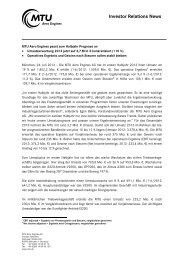


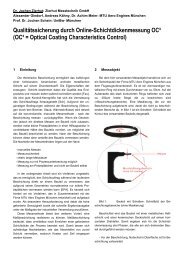
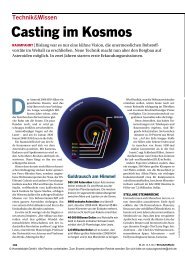

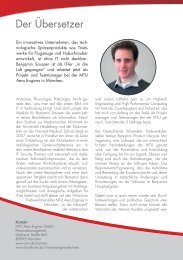
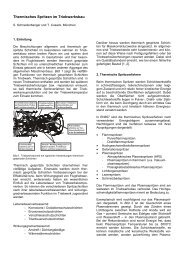
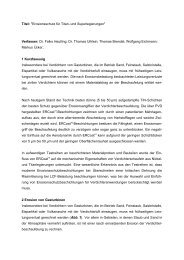



![Download PDF [5,37 MB] - MTU Aero Engines](https://img.yumpu.com/21945461/1/190x125/download-pdf-537-mb-mtu-aero-engines.jpg?quality=85)